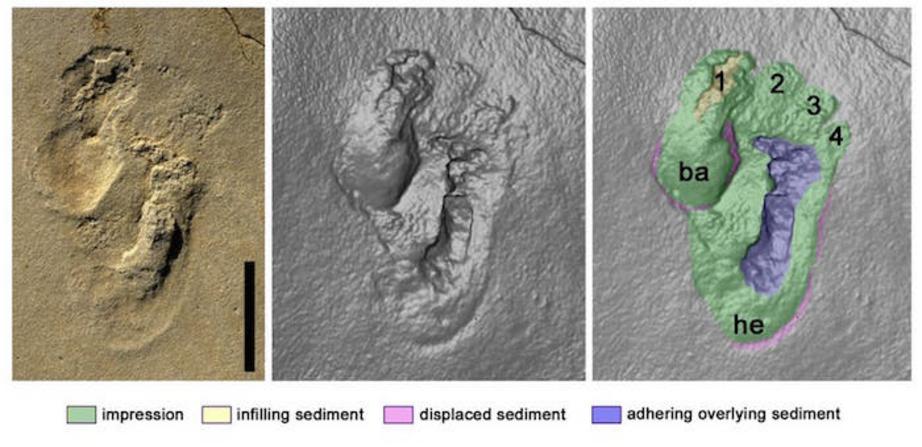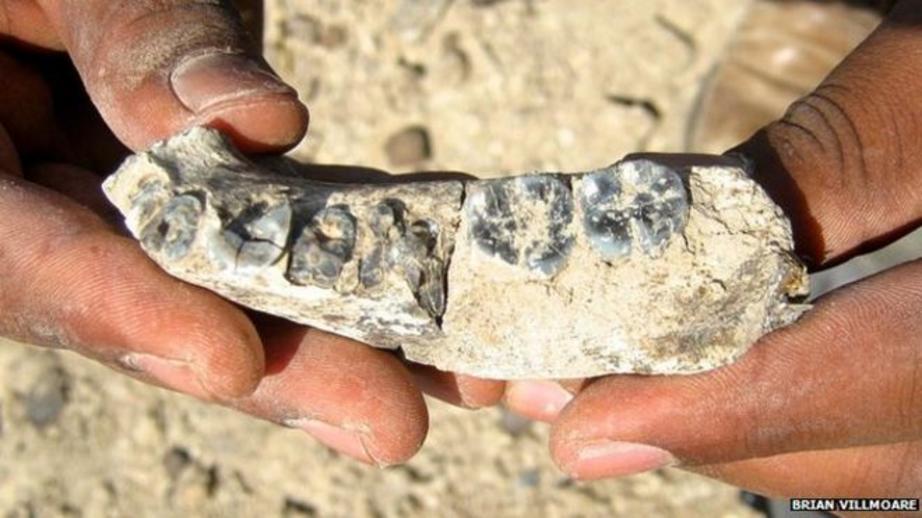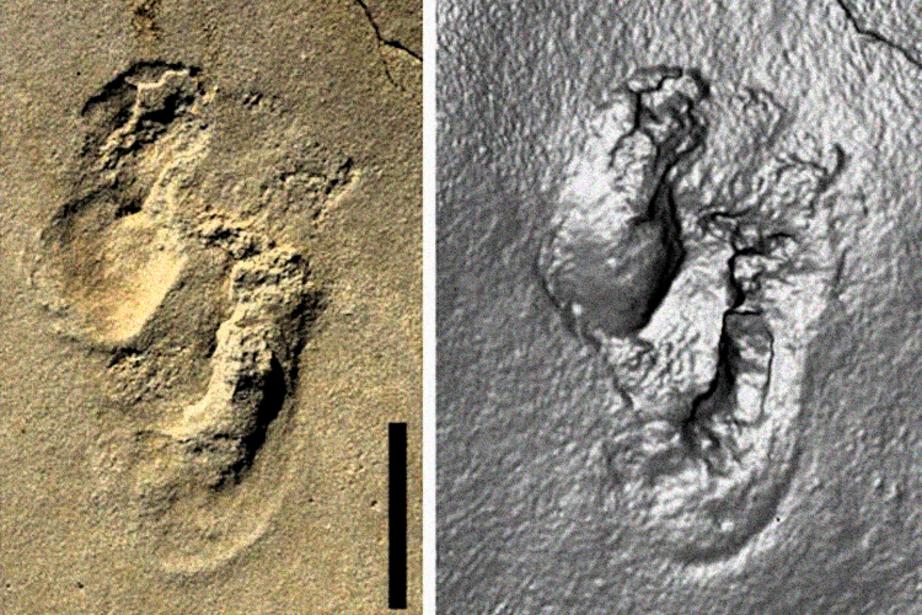Six-million-year-old footprint found on the Island of Crete challenges human history
The human footprint is unique, and it is easy to distinguish from other animals’ prints. Any tracker or hunter knows this. A newly discovered humanoid footprint found on the Island of Crete dated almost 6-million-years-old, is now shaking the very foundations of the human historical narrative.
The footprint doesn’t look exactly like modern man’s footprint, but it is remarkably similar. Archeologists found the fossil in Trachilos, Crete, and have published their findings in the Proceedings of the Geologist Association.
To say that the age of the footprint – 5.7 million – is controversial is an understatement. If the dating is correct, it means that our earliest human ancestors were traversing the planet from southern Europe to East Africa millions of years sooner than has previously been assumed.

Dating the true age of humans is a messy business. A recent article published in National Geographic explains that humans may be 80,000 years older than we previously thought simply due to a more accurate way of dating Homo sapiens’ archeological spoils, like stone-tipped tools and water vessels.
It was assumed for some time that the oldest human was 195,000 years of age based on bones that were discovered.
Using argon-argon dating—a technique that compares different isotopes of the element argon—researchers determined that the volcanic ash layers entombing the tools at Gademotta date back at least 276,000 years – that’s the 80,000 year difference.
Next, we had scientists who claimed the “oldest” human bones were 300,000 – 350,000 years old found in Morocco. These are called the Jebel Irhoud bones. The stone tools that were uncovered with them, are far older—around 315,000 years old, with a possible range of 280,000 to 350,000 years. The bones were previously thought to be Neanderthals, but have been assigned Homo sapiens status at 300,000 years of age.
We’ve also been told that the oldest human specimen found thus far is 2.8 million years old. Teeth fossils from a human skull were found in Ethiopia, and called the “first human.”

Then we have a massive jump. Scientists found 7.2 million-year-old “pre-human” remains in the Balkans, (Greece and Bulgaria) as described by the University of Toronto. This would mean that the “cradle of civilization” is in parts of modern-day Europe, not Africa. Researchers call the remains the first “pre-humans to exist following the split from the last chimpanzee-human common ancestor.”
While institutions like the Smithsonian admit that we don’t truly know who our direct evolutionary ancestors were, the humanoid footprint found in Crete suggests our origins may go back much further than anyone imagined.
Graham Hancock is one of the many notable figures who believes that everything we have been taught about human history is fraudulent. He first posited in his best-selling book, Fingerprints of the Gods, that archeologists and geologists have made massive miscalculations. Human beings, according to Hancock, have been around since pre-Ice Age, and were likely killed off by a cataclysmic event.
This theory jibes with many ancient prophecies which speak of cycles of human experience on this planet. The many prophecies of the Hopi, for example, rarely specify dates for the shifting of the ages, while the Maya offered a more specific timeline, which we are just learning to figure out.
The Hopi have been called the masters of space, and the Maya, the masters of time. Therefore, the Maya use the Tzolk’in calendar of 260 days, and the Hopi simply gave future predictions without telling us exactly when things would occur.
Hancock also asserts that though most of human kind died, there were survivors. We see the remnants of the earlier human civilization in ancient settlements in Mexico, Mesopotamia, Egypt, Peru, and Indonesia. The Egyptians called this the “homeland of the primeval ones.”
The previous civilization upon earth’s surface was likely much more advanced than today’s civilization.
In his follow-up book, Magicians of the Gods, Hancock suggests that the survivors in key locations like Gobekli Tepe in Turkey, Baalbek in the Lebanon, Giza in Egypt, ancient Sumer, Mexico, Peru and across the Pacific where a huge pyramid has recently been discovered in Indonesia – the wise man from our past reminded us of a time when we stopped honoring Mother Nature. It is this great hubris which may have caused the end of Atlantis, or any other great civilization that came before.
What’s even more fascinating is that the 5.7 million-year-old footprint found in Crete may suggest a concrete link to these ancient human civilizations which Hancock, and ancient cultures have spoken of.

